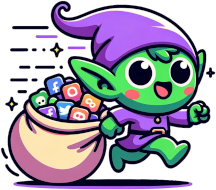e-Mintza

App Keywords
No keywords found for this app.
App Description
e-Mintza is a customisable and dynamic system of augmentative and alternative communication aimed at people with autism or with oral or written communication barriers. Born out of the collaboration between the Orange Foundation and Foundation Dr. Carlos Elósegui of the Policlínica Gipuzkoa, it allows the user to communicate with other people by means of tactile and multimedia technology, adapting to the necessities of its users easily. Also it promotes its autonomy through a customised agenda.
e-Mintza (which in Euskera means electronic speech) is a free downloadable program that shows communication display with pictograms or associated images and sounds that allow a direct and simple communication. The display is easily customisable as far as the language used is concerned, texts, images, videos or sounds, based on the necessities of the user, who will be able to preferablyinteract using a touch screen on a tablet type device, but also using a conventional mouse on a computer.
Considering a beginning to ensure communication for people with autism, on who the application has been tested, the program can be used by other many people, given its high customisation capacity. Thus, for example, it may be useful for deaf children who have not yet acquired a language, people with serious intellectual discapacities, patient with cerebral damage caused by traumas or accidents, senior people with degenerative neuro diseases, people that cannot express themselves, who may require intubation or assisted ventilation during their stay in hospital, etc.
One of the characteristics of the e-Mintza software is the possibility of personalisation with photos instead of pictograms or words. In addition, there is an option to add videos.
The technical development of e-Mintza was done by Nesplora, counting on essential evaluation on the part of the Gautena Autism Association during the different phases of the project. Likewise, some of the pictograms used are from the Aragonese website of pictograms and graphical resources (ARASAAC).
The evaluation with real users continued over a nine month period considering parameters such as the adaptation of pictograms, the size of the photos, the motor capacity of the user, real communicative utility and not so much a recreational tool, the manageability and educative functionality, among other aspects. The agenda is emphasised among the n
 AppGoblin
AppGoblin